共计 5966 个字符,预计需要花费 15 分钟才能阅读完成。
流量比较大的日志要是直接写入 Hadoop 对 Namenode 负载过大,所以入库前合并,可以把各个节点的日志凑并成一个文件写入 HDFS。根据情况定期合成,写入到 hdfs 里面。
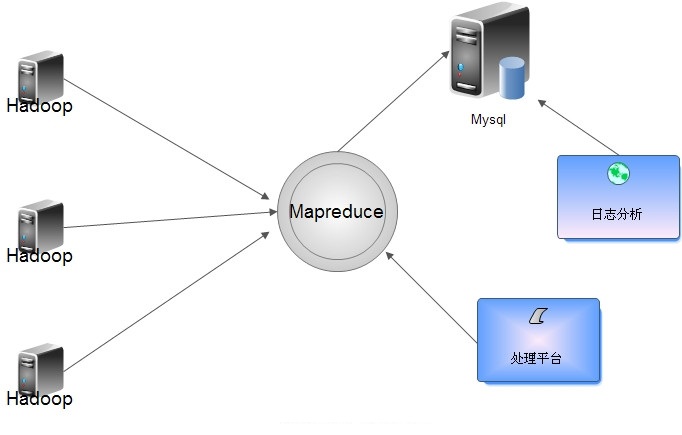
咱们看看日志的大小,200G 的 dns 日志文件,我压缩到了 18G,要是用 awk perl 当然也可以,但是处理速度肯定没有分布式那样的给力。
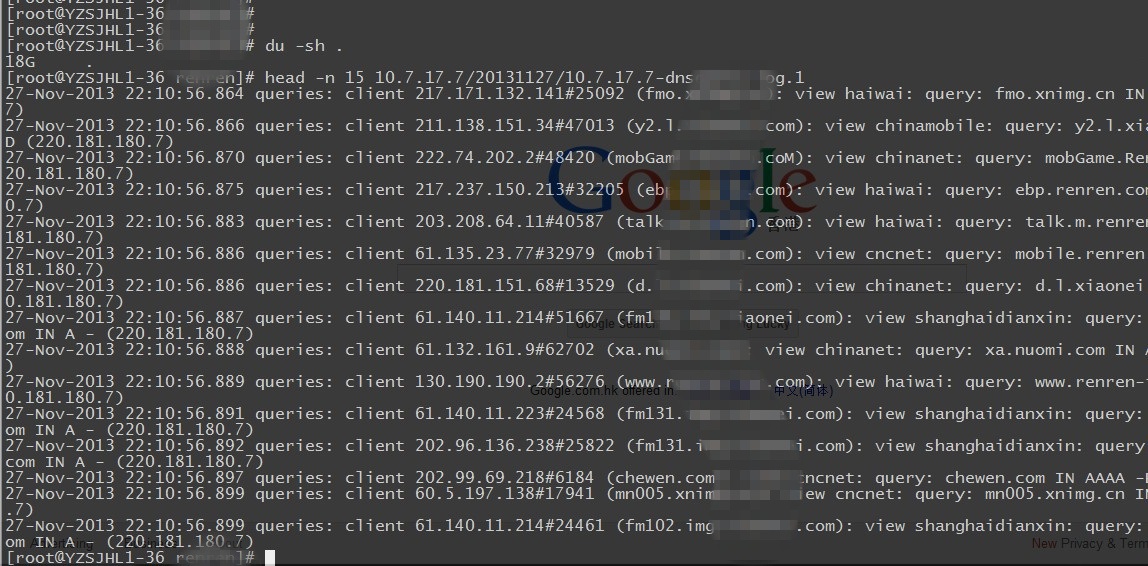
Hadoop Streaming 原理
mapper 和 reducer 会从标准输入中读取用户数据,一行一行处理后发送给标准输出。Streaming 工具会创建 MapReduce 作业,发送给各个 tasktracker,同时监控整个作业的执行过程。
任何语言,只要是方便接收标准输入输出就可以做 mapreduce~
再搞之前我们先简单测试下 shell 模拟 mapreduce 的性能速度~
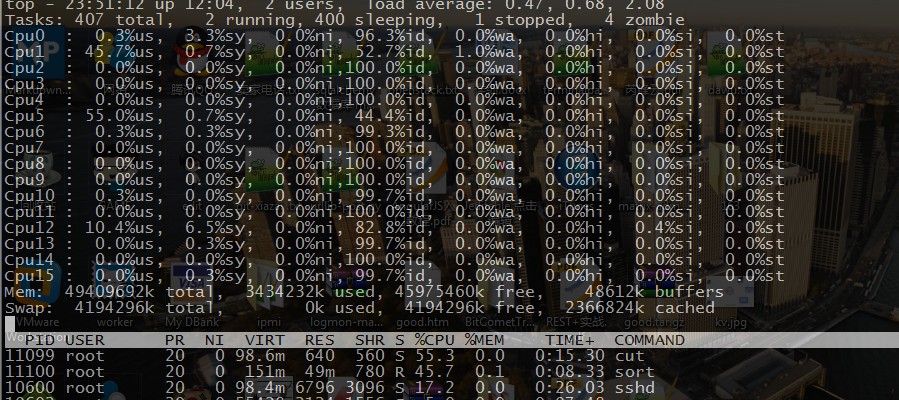
看下他的结果,350M 的文件用时 35 秒左右。
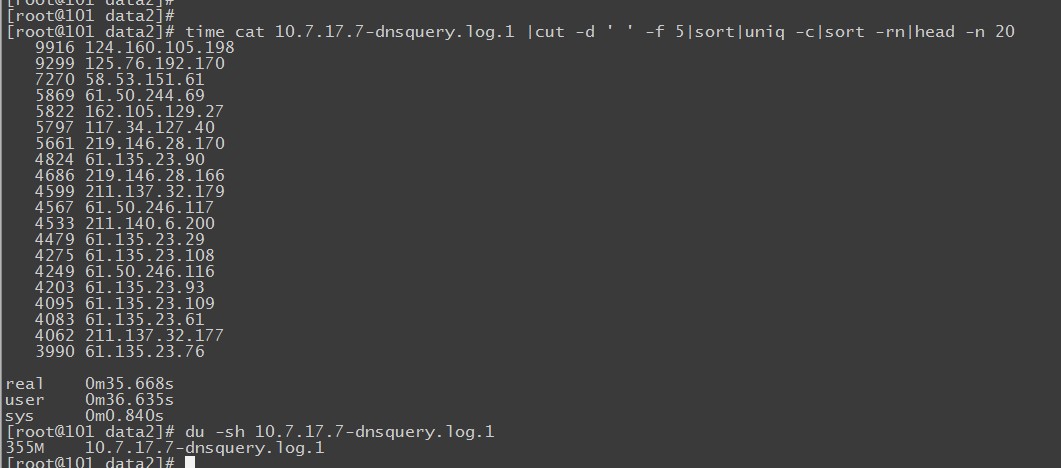
这是 2G 的日志文件,居然用了 3 分钟。当然和我写的脚本也有问题,我们是模拟 mapreduce 的方式,而不是调用 shell 下牛逼的 awk,gawk 处理。
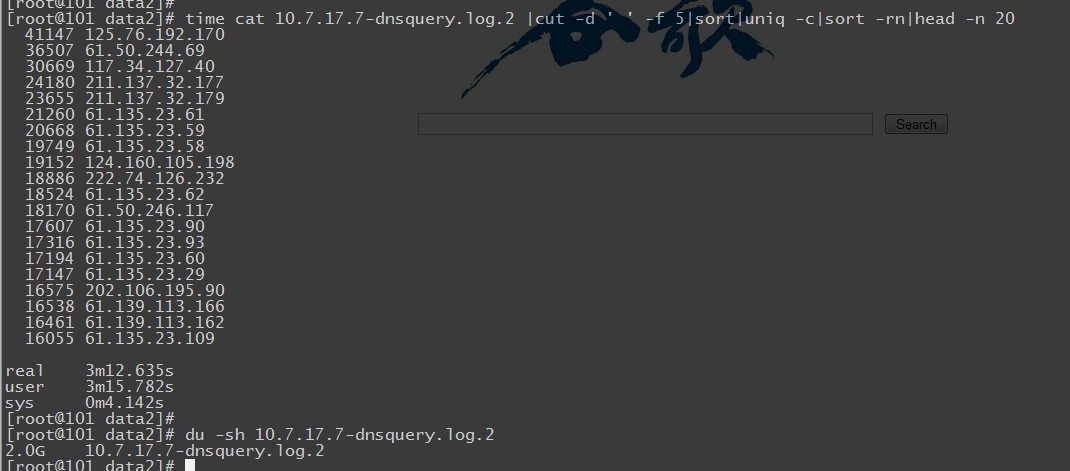
awk 的速度!果然很霸道,处理日志的时候,我也很喜欢用 awk,只是学习的难度有点大,不像别的 shell 组件那么灵活简单。
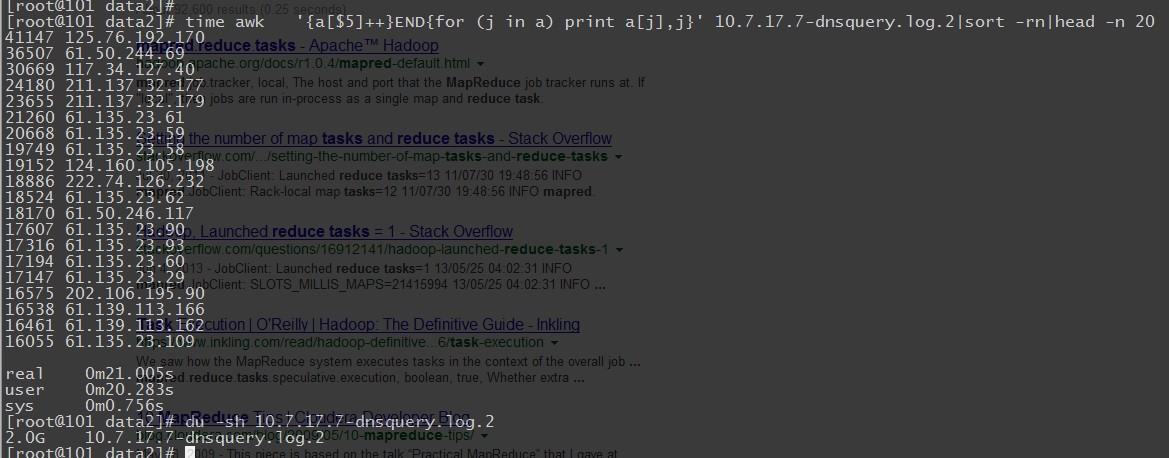
推荐阅读:
《Python 开发技术详解》.(周伟, 宗杰).[高清 PDF 扫描版 + 随书视频 + 代码] http://www.linuxidc.com/Linux/2013-11/92693.htm
Python 脚本获取 Linux 系统信息 http://www.linuxidc.com/Linux/2013-08/88531.htm
Python 网站文件及数据库备份脚本 http://www.linuxidc.com/Linux/2012-06/62346.htm
Python 文件处理:读取文件 http://www.linuxidc.com/Linux/2013-08/88496.htm
如何发布自定义的 Python 模块 http://www.linuxidc.com/Linux/2013-08/88495.htm
Python 爬虫多线程抓取代理服务器 http://www.linuxidc.com/Linux/2013-07/87289.htm
Python 中 re(正则表达式)模块详解 http://www.linuxidc.com/Linux/2013-08/88588.htm
Python 的详细介绍:请点这里
Python 的下载地址:请点这里
这是官方的提供的两个 demo ~
map.py
#!/usr/bin/env python
“””A more advanced Mapper, using Python iterators and generators.”””
import sys
def read_input(file):
for line in file:
# split the line into words
yield line.split()
def main(separator=’\t’):
# input comes from STDIN (standard input)
data = read_input(sys.stdin)
for words in data:
# write the results to STDOUT (standard output);
# what we output here will be the input for the
# Reduce step, i.e. the input for reducer.py
#
# tab-delimited; the trivial word count is 1
for word in words:
print ‘%s%s%d’ % (word, separator, 1)
if __name__ == “__main__”:
main()
reduce.py 的修改方式
#!/usr/bin/env python
“””A more advanced Reducer, using Python iterators and generators.”””
from itertools import groupby
from operator import itemgetter
import sys
def read_mapper_output(file, separator=’\t’):
for line in file:
yield line.rstrip().split(separator, 1)
def main(separator=’\t’):
# input comes from STDIN (standard input)
data = read_mapper_output(sys.stdin, separator=separator)
# groupby groups multiple word-count pairs by word,
# and creates an iterator that returns consecutive keys and their group:
# current_word – string containing a word (the key)
# group – iterator yielding all [“<current_word>”, “<count>”] items
for current_word, group in groupby(data, itemgetter(0)):
try:
total_count = sum(int(count) for current_word, count in group)
print “%s%s%d” % (current_word, separator, total_count)
except ValueError:
# count was not a number, so silently discard this item
pass
if __name__ == “__main__”:
main()
咱们再简单点:
#!/usr/bin/env python
import sys
for line in sys.stdin:
line = line.strip()
words = line.split()
for word in words:
print ‘%s\t%s’ % (word, 1)
#!/usr/bin/env python
from operator import itemgetter
import sys
current_word = None
current_count = 0
word = None
for line in sys.stdin:
line = line.strip()
word, count = line.split(‘\t’, 1)
try:
count = int(count)
except ValueError:
continue
if current_word == word:
current_count += count
else:
if current_word:
print ‘%s\t%s’ % (current_word, current_count)
current_count = count
current_word = word
if current_word == word:
print ‘%s\t%s’ % (current_word, current_count)
咱们就简单模拟下数据,跑个测试

流量比较大的日志要是直接写入 Hadoop 对 Namenode 负载过大,所以入库前合并,可以把各个节点的日志凑并成一个文件写入 HDFS。根据情况定期合成,写入到 hdfs 里面。

咱们看看日志的大小,200G 的 dns 日志文件,我压缩到了 18G,要是用 awk perl 当然也可以,但是处理速度肯定没有分布式那样的给力。

Hadoop Streaming 原理
mapper 和 reducer 会从标准输入中读取用户数据,一行一行处理后发送给标准输出。Streaming 工具会创建 MapReduce 作业,发送给各个 tasktracker,同时监控整个作业的执行过程。
任何语言,只要是方便接收标准输入输出就可以做 mapreduce~
再搞之前我们先简单测试下 shell 模拟 mapreduce 的性能速度~

看下他的结果,350M 的文件用时 35 秒左右。

这是 2G 的日志文件,居然用了 3 分钟。当然和我写的脚本也有问题,我们是模拟 mapreduce 的方式,而不是调用 shell 下牛逼的 awk,gawk 处理。

awk 的速度!果然很霸道,处理日志的时候,我也很喜欢用 awk,只是学习的难度有点大,不像别的 shell 组件那么灵活简单。

推荐阅读:
《Python 开发技术详解》.(周伟, 宗杰).[高清 PDF 扫描版 + 随书视频 + 代码] http://www.linuxidc.com/Linux/2013-11/92693.htm
Python 脚本获取 Linux 系统信息 http://www.linuxidc.com/Linux/2013-08/88531.htm
Python 网站文件及数据库备份脚本 http://www.linuxidc.com/Linux/2012-06/62346.htm
Python 文件处理:读取文件 http://www.linuxidc.com/Linux/2013-08/88496.htm
如何发布自定义的 Python 模块 http://www.linuxidc.com/Linux/2013-08/88495.htm
Python 爬虫多线程抓取代理服务器 http://www.linuxidc.com/Linux/2013-07/87289.htm
Python 中 re(正则表达式)模块详解 http://www.linuxidc.com/Linux/2013-08/88588.htm
Python 的详细介绍:请点这里
Python 的下载地址:请点这里
剩下就没啥了,在 Hadoop 集群环境下,运行 hadoop 的 steaming.jar 组件,加入 mapreduce 的脚本,指定输出就行了. 下面的例子我用的是 shell 的成分。
[root@101 cron]#$HADOOP_HOME/bin/hadoop jar $HADOOP_HOME/contrib/streaming/hadoop-*-streaming.jar \
-input myInputDirs \
-output myOutputDir \
-mapper cat \
-reducer wc
详细的参数,对于咱们来说提供性能可以把 tasks 的任务数增加下,根据情况自己测试下,也别太高了,增加负担。
(1)-input:输入文件路径
(2)-output:输出文件路径
(3)-mapper:用户自己写的 mapper 程序,可以是可执行文件或者脚本
(4)-reducer:用户自己写的 reducer 程序,可以是可执行文件或者脚本
(5)-file:打包文件到提交的作业中,可以是 mapper 或者 reducer 要用的输入文件,如配置文件,字典等。
(6)-partitioner:用户自定义的 partitioner 程序
(7)-combiner:用户自定义的 combiner 程序(必须用 java 实现)
(8)-D:作业的一些属性(以前用的是 -jonconf),具体有:
1)mapred.map.tasks:map task 数目
2)mapred.reduce.tasks:reduce task 数目
3)stream.map.input.field.separator/stream.map.output.field.separator:map task 输入 / 输出数
据的分隔符, 默认均为 \t。
4)stream.num.map.output.key.fields:指定 map task 输出记录中 key 所占的域数目
5)stream.reduce.input.field.separator/stream.reduce.output.field.separator:reduce task 输入 / 输出数据的分隔符,默认均为 \t。
6)stream.num.reduce.output.key.fields:指定 reduce task 输出记录中 key 所占的域数目
相关阅读:
Ubuntu 13.04 上搭建 Hadoop 环境 http://www.linuxidc.com/Linux/2013-06/86106.htm
Ubuntu 12.10 +Hadoop 1.2.1 版本集群配置 http://www.linuxidc.com/Linux/2013-09/90600.htm
Ubuntu 上搭建 Hadoop 环境(单机模式 + 伪分布模式)http://www.linuxidc.com/Linux/2013-01/77681.htm
Ubuntu 下 Hadoop 环境的配置 http://www.linuxidc.com/Linux/2012-11/74539.htm
单机版搭建 Hadoop 环境图文教程详解 http://www.linuxidc.com/Linux/2012-02/53927.htm
搭建 Hadoop 环境(在 Winodws 环境下用虚拟机虚拟两个 Ubuntu 系统进行搭建)http://www.linuxidc.com/Linux/2011-12/48894.htm
更多 Hadoop 相关信息见Hadoop 专题页面 http://www.linuxidc.com/topicnews.aspx?tid=13
















